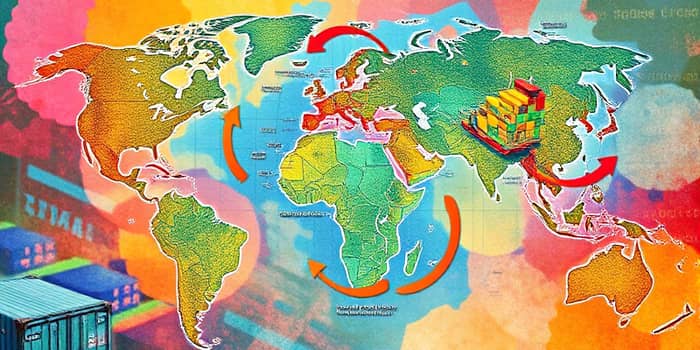
In 2025, escalating tariffs and countermeasures reshaped global commerce, altering fortunes and exposing vulnerabilities.
The year began with cautious optimism as global trade expanded by about $500 billion in the first half.
However, mounting tensions reached a climax when key players imposed unprecedented levies.
Despite frictions, global trade continued to record gains—manufacturing led the surge.
Electronics and automotive goods rose by 2.5% quarter-on-quarter, while services trade climbed 4%. Yet, trade policy uncertainty loomed large, threatening to reverse gains.
Trade imbalances narrowed: China’s surplus with the US fell, the EU’s surplus shrank, and deficits widened in Japan, India, and the UK.
The US ramped up tariffs on China, Canada, and Mexico, reaching peaks above 145% before settling around 30%.
These measures aimed to protect domestic industries but spurred widespread retaliation.
By year’s end, US real GDP growth was cut by 0.9 percentage points in 2025, with long-run output lowered by 0.6% annually. Projections warn of up to a 6% reduction by 2054 under sustained barriers.
Consumers felt the pinch: tariffs drove a 2.3% rise in prices, especially in apparel (+17%). The average household faced an average household loss of $3,800 in 2024 dollars, with a middle-income family losing about $22,000 over a lifetime.
Countries with heavy US trade exposure bore the brunt, while some found unexpected gains.
While export-oriented economies with limited options suffered, some like the UK and Turkey benefited from improved terms of trade as competitors faced higher barriers.
The conflict produced stark contrasts.
However, US government thrift from tariffs—netting $3.1 trillion over a decade—was offset by $582 billion in negative dynamic effects, illustrating the trade-off between revenue and growth.
Manufacturing hubs felt sustained supply chain disruptions, with auto and electronics sectors hit by component shortages. Textile and apparel producers led price spikes, while steel and aluminum tariffs introduced in 2025 continued to reverberate.
Politically, higher consumer costs and job losses fueled public discontent. Governments scrambled to offer fiscal relief, increasing public investment by 0.6 percentage points of GDP over 2025–27 to cushion shocks.
Institutions like the IMF and ECB warned of stagflation risks, urging caution against further escalation. Heightened policy uncertainty and tariff cycles raised the chance of a downturn.
By mid-2025, J.P. Morgan placed the probability of a global recession at 40% global recession risk, up from 30% earlier in the year.
As 2026 approaches, negotiators weigh phased tariff rollbacks in exchange for stronger trade rules on digital services, intellectual property, and labor standards.
Potential off-ramps include multilateral tariff reductions under WTO auspices, targeted sectoral exemptions, and confidence-building measures to lower policy uncertainty. Business leaders advocate for supply chain diversification, fostering resilience against future shocks.
The coming year offers a pivotal choice: entrench protectionist barriers or rebuild trust and unlock sustainable growth.
References





